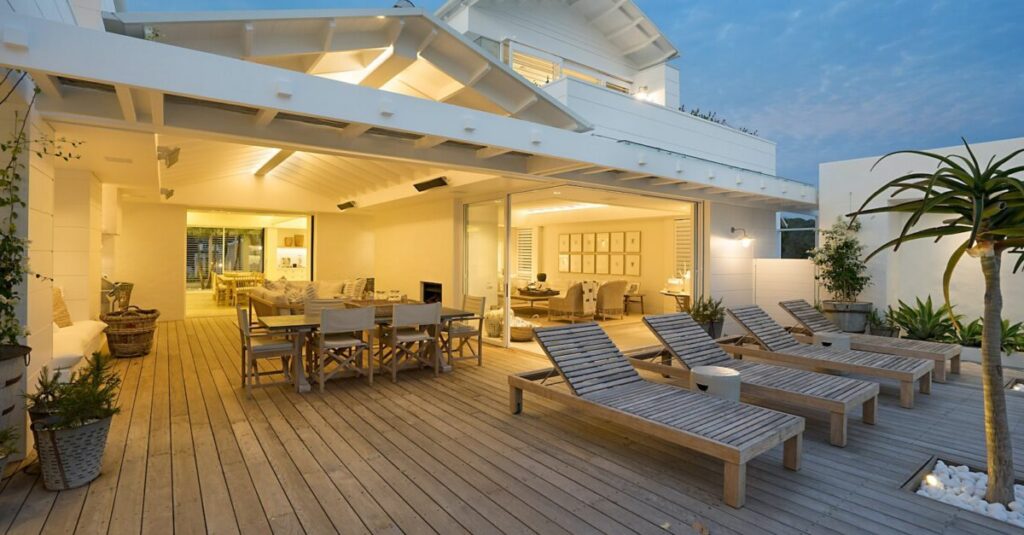What is the Problem?
When it comes to outdoor living spaces, there is no denying that patio furniture is an essential part of the equation. With the right furniture, you can create a comfortable and inviting space that will encourage you and your loved ones to spend more time outdoors and enjoy the beautiful weather.
However, a common problem that many people with outdoor furniture face is the risk of scratching their deck. Whether you have a wooden or composite deck, the feet of your furniture can easily cause scratches and damage over time, which can ruin the aesthetic appeal of your outdoor space and even decrease the value of your property.
The good news is that there are several ways to prevent these scratches from occurring, ultimately protecting your deck and preserving the beauty of your outdoor living space. From using furniture pads and rubber feet to regular cleaning and maintenance, taking precautionary measures can go a long way in keeping your deck scratch-free and looking its best.
So if you’re wondering how to keep your patio furniture from scratching your deck, don’t worry- there are plenty of options available to help you protect your investment and enjoy your outdoor living space to the fullest.
What are the Solutions?
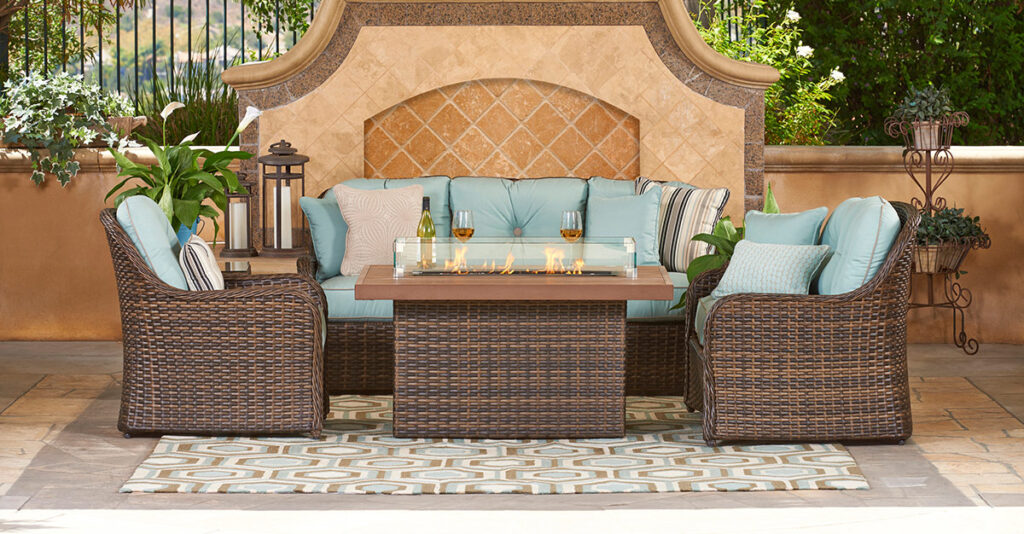
If you’re looking to protect your deck from furniture scratches, there are a range of solutions available to you. Here are a few options to consider:
1. Furniture Pads: One of the simplest and most effective solutions to furniture scratches is to use furniture pads or felt glides under the feet of your outdoor furniture. These cushions can be attached to the bottom of your chairs and tables, creating a soft barrier between the furniture and the deck surface.
2. Rubber Feet: Another option is to use rubber feet on the bottom of your outdoor furniture legs. These can be found at most home improvement stores and can provide a sturdy cushion between the furniture and the deck surface. Additionally, many metal furniture legs come with rubber feet already installed.
3. Regular Cleaning: Simply keeping your deck clean can also help prevent scratches from occurring. Regular sweeping and washing with a gentle detergent can remove any debris or dirt that could scratch the surface of your deck.
4. Outdoor Cushions: Using outdoor cushions on your chairs and lounges can also help prevent scratches and protect your deck from damage. Not only do they provide a cushioned barrier between your furniture and the deck, but cushions can also add a splash of color and comfort to your outdoor living space. You can also comfort your outdoor living space by replacing your patio cushions.
5. Flooring Materials: Finally, consider the type of flooring material you have on your deck. Pressure-treated wood, natural stone, and porcelain tiles are all durable materials that can withstand the weight of heavy furniture without scratching or denting.
Overall, there are several ways to prevent furniture scratches on your deck. By taking a few precautionary steps, you can ensure that your outdoor living space not only looks great, but is protected from damage as well.
Types of Decking and Furniture Materials
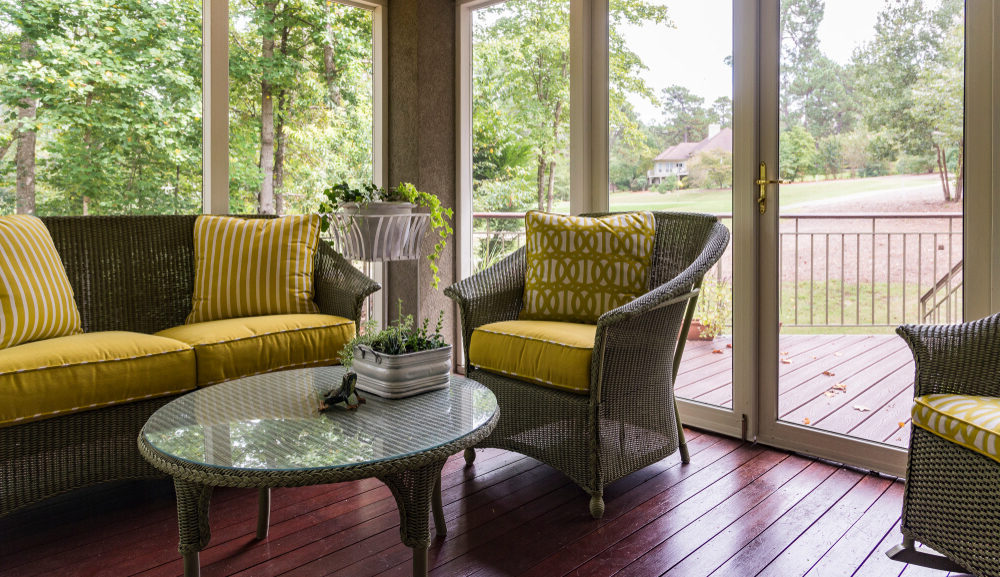
When it comes to creating an outdoor living space, choosing the right materials for your decking and furniture can make all the difference. Not only do you want your deck and furniture to look great, but you also want them to be durable, weather-resistant, and able to withstand wear and tear over time. Here are some of the most common types of decking and furniture materials to consider:
Decking Materials:
– Pressure-Treated Wood: This is one of the most affordable and widely used decking materials. It is made from pine that has been chemically treated to resist rot, insects, and decay.
– Composite Decking: This is a manmade decking material that is made from a combination of recycled materials, such as wood fibers and plastic. It is durable, low-maintenance, and available in a range of colors and styles.
– Natural Wood: If you prefer the look of natural wood, there are many types of wood that can be used for decking, including cedar, redwood, and tropical hardwoods. However, natural wood can require more maintenance and upkeep than other decking materials.
Furniture Materials:
– Metal: Metal furniture, such as wrought iron or aluminum, is durable and easy to clean. It can also provide a sleek and modern look to your outdoor living space.
– Wood: Wooden furniture, such as teak or cedar, is a classic choice for outdoor furniture. It is strong, weather-resistant, and can provide a natural and rustic look to your deck.
– Synthetic Materials: Similar to composite decking, there are many synthetic materials available for outdoor furniture, such as resin or recycled plastics. These materials are often more affordable and low-maintenance than natural wood or metal.
It’s important to consider the pros and cons of each material before making a decision for your decking and furniture. Think about your budget, desired aesthetic, and the level of maintenance you are willing to commit to. With the right combination of decking and furniture materials, you can create an outdoor living space that is both functional and beautiful.
Pressure-Treated Wood
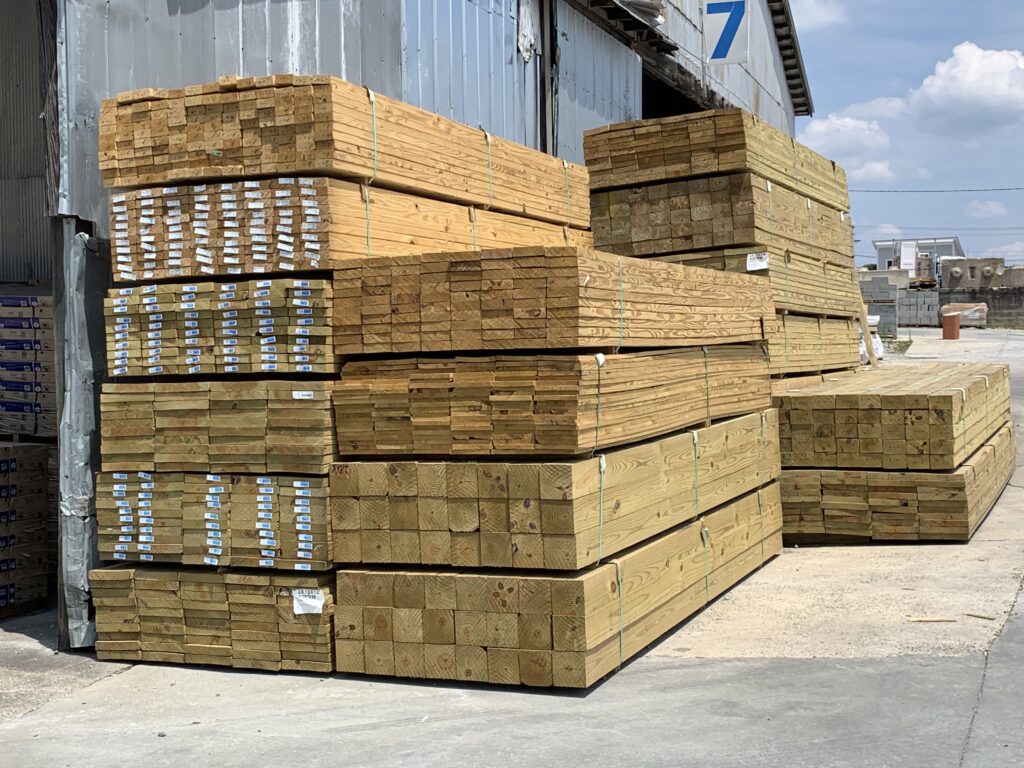
When it comes to decking materials, pressure-treated wood is one of the most popular and widely used options. This type of wood is made from pine that has been treated with chemicals to resist rot, insects, and decay.
One of the biggest advantages of pressure-treated wood is its affordability. Compared to other decking materials, such as composite or natural wood, pressure-treated wood is often much more budget-friendly. It is also widely available at many home improvement stores, making it easy to find and purchase.
In addition to its affordability, pressure-treated wood is also durable and long-lasting. The chemical treatment makes it resistant to damage from insects, rot, and decay, which can extend the lifespan of your deck significantly. With proper maintenance and upkeep, pressure-treated wood can last for decades.
However, it is important to note that pressure-treated wood does require some maintenance. Over time, the wood may start to fade or become discolored from exposure to sunlight and weather. Regular cleaning and staining can help to protect and preserve the wood, as well as enhance its appearance.
Overall, if you’re looking for an affordable and durable decking material, pressure-treated wood is a great option. With proper care and maintenance, your pressure-treated deck can provide many years of enjoyment and use.
Composite Decking
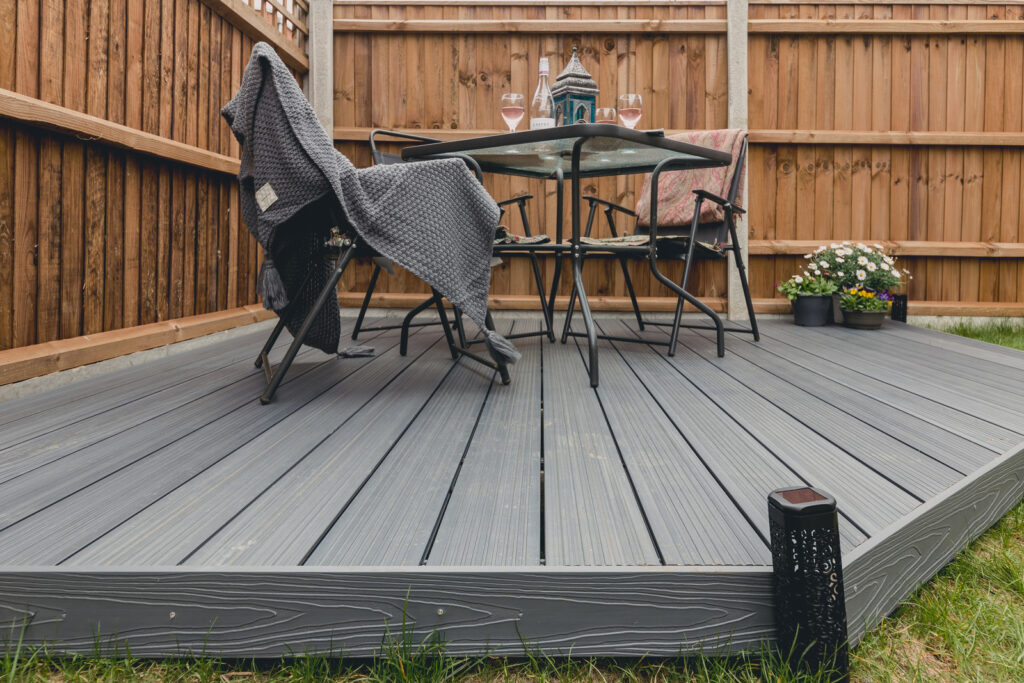
Composite decking is becoming an increasingly popular choice among homeowners who are looking for a low-maintenance, long-lasting option for their outdoor living spaces. These decks are made from a combination of recycled materials, such as wood fibers and plastic, which make them an eco-friendly choice.
One of the biggest advantages of composite decking is its durability. Unlike pressure-treated wood, composite decking is resistant to rot, insects, and decay, making it a great option for areas with high humidity or damp conditions. This decking material is also less prone to fading, staining, and scratching, making it a great choice for families with kids and pets.
Composite decking is also more versatile than other decking materials. It can be designed to resemble natural wood, including its texture and grain patterns, while also offering a range of colors and finishes. This allows homeowners to create an outdoor oasis that complements their home’s style and personality.
Additionally, composite decking requires very little maintenance. Unlike with pressure-treated wood, homeowners do not need to worry about staining, sealing or oiling their decks to keep them looking great. A simple cleaning with soap and water is all that is needed to maintain its appearance.
Finally, composite decking is a sustainable choice for environmentally conscious homeowners. Made from recycled materials, composite decking not only lowers waste, but it also saves tons of trees from being cut down. In addition, since composite decking does not require the application of any harmful chemicals, it is a chemical-free option that is safe for children and pets.
In conclusion, composite decking is an eco-friendly, durable, and versatile option for homeowners who are looking for a low-maintenance, long-lasting deck that is safe for their families and pets. With a range of styles and colors to choose from, composite decking is a great choice for any outdoor living space.
Wooden Decking
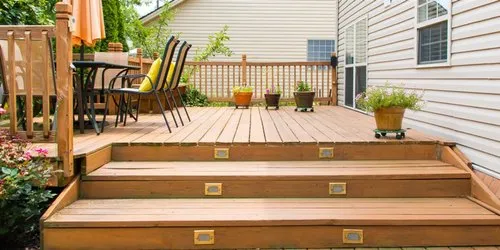
Wooden decking is a popular choice for homeowners who want to create an outdoor living space that is both functional and beautiful. With the right care and maintenance, wooden decking can last for many years, offering a natural look and feel that complements nearly any architectural style.
One of the key benefits of wooden decking is its affordability. Compared to other decking materials like composite or natural stone, wooden decking is often less expensive, making it a great choice for homeowners on a budget. It is also a renewable resource, and when harvested responsibly, can be a sustainable choice for homeowners who are environmentally conscious.
However, wooden decking requires more maintenance than other materials to stay in top condition. Over time, it can be damaged by weather, sun exposure, and even foot traffic. Scratches, fading, and warping are common problems that homeowners face with wooden decking.
To keep wooden decking from scratching, many homeowners opt to use furniture pads or rubber feet under the legs of their outdoor furniture to protect the surface. Regular cleaning with a pressure washer or stiff brush can also help remove dirt, debris, and stains that can cause scratching.
Another important step in maintaining wooden decking is sealing and staining it on a regular basis. This can help to protect the wood from the elements, prevent fading, and extend its lifespan. Choosing the right type of sealant and stain is important, as some products can be harmful to the environment or have a strong odor.
In addition to regular maintenance, homeowners who choose wooden decking can also modify the design of their outdoor living space to reduce the risk of scratches occurring. For example, using outdoor cushions on patio chairs and benches can help to prevent direct contact between furniture legs and the deck surface. Using coasters and placemats on tables can also help to protect the wood from light furniture.
Overall, wooden decking offers a natural and versatile option for homeowners who want to create an outdoor living space that reflects their tastes and needs. By taking the time to properly care for and maintain their wooden decking, homeowners can enjoy their deck for years to come.
Preventing Scratches from Patio Furniture
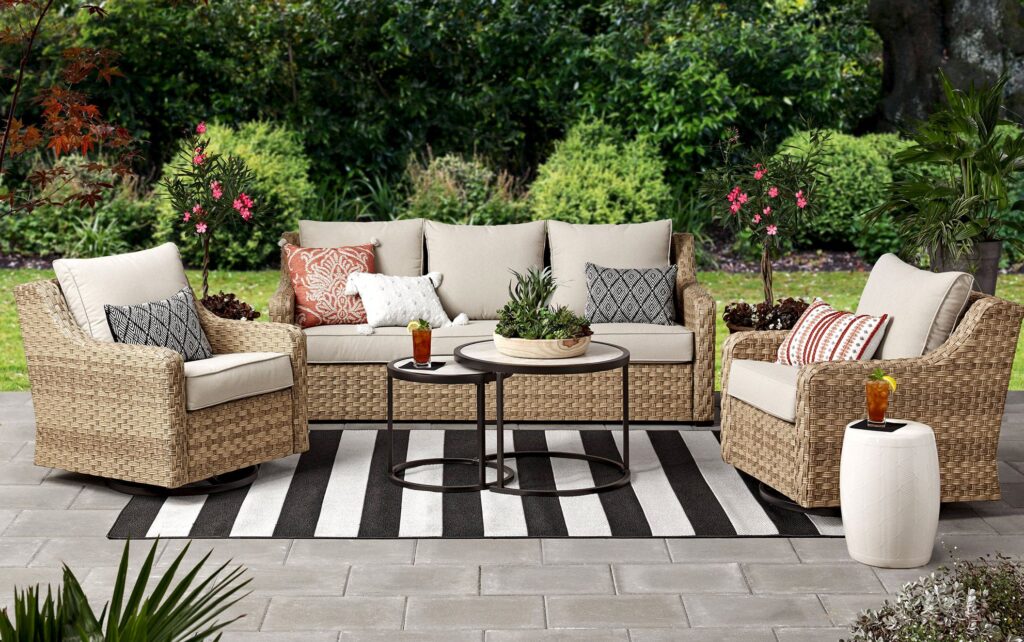
When it comes to enjoying the outdoors, having a comfortable space to relax and unwind is essential. Patio furniture provides a great way to create a comfortable outdoor environment, but it can also pose a risk to your decking material. Scratches and scuffs can occur when furniture legs or metal feet come into contact with the deck surface, leading to unsightly damage that can be costly to repair. The good news is that there are several steps you can take to prevent scratches from patio furniture.
First and foremost, you should consider using furniture pads or rubber feet under the legs of your outdoor furniture. These simple additions can provide a protective barrier between your furniture and the deck surface, minimizing the risk of scratches occurring. Furniture pads come in various shapes and sizes, allowing you to customize their fit to your specific furniture needs. Rubber feet are also a great option for heavier furniture items as they offer stability and slip resistance.
Regular cleaning of your deck surface is also important when it comes to preventing scratches. Dirt, debris, and stains can build up over time and cause friction between the furniture legs and the deck surface. By cleaning your deck regularly with a pressure washer or stiff brush, you can remove these contaminants and reduce the risk of scratches occurring.
In addition to these preventive measures, you can also modify the design of your outdoor living space to reduce the risk of damage occurring. Using outdoor cushions on patio chairs and benches can help to prevent direct contact between furniture legs and the deck surface. These cushions not only offer added comfort but can also help to protect your deck from scratches. Using coasters and placemats on tables is also a great way to minimize the risk of scratches from light furniture, ensuring that your deck remains in great condition for years to come.
When it comes to enjoying your outdoor living space, being proactive about preventing scratches from patio furniture is important. By taking these simple steps, you can protect your deck investment and keep it looking its best, allowing you to relax and enjoy the great outdoors in comfort and style.
Pads for Chair and Table Legs

When it comes to protecting your deck or flooring material from scratches and damage caused by outdoor furniture, choosing the right pads for your chair and table legs is crucial. Furniture pads come in a range of shapes, sizes, and materials, and can be easily attached to the feet of your outdoor furniture. Here are some things to consider when selecting the right furniture pads for your needs:
Material: The material of the pad is an important factor in determining how effective it will be in preventing scratches and damage. A hard plastic pad may be suitable for lighter furniture, but heavier items may require a softer, more cushioned material such as rubber or felt.
Size: It’s important to choose furniture pads that fit snugly onto the feet of your outdoor furniture. A pad that is too small may not provide adequate protection, and a pad that is too large may protrude and create a tripping hazard.
Shape: The shape of your furniture pad may also affect its effectiveness. A round pad may be useful for some chair legs, but for others, a square or rectangular pad may provide better coverage and stability.
Adhesion: Check whether the pads you’re considering have an adhesive backing or require attachment with screws or nails. Adhesive pads are typically easier to install but may be less stable than those that require hardware attachment.
Ultimately, choosing the right furniture pads for your outdoor living space is an important step in protecting your deck or flooring material from scratches and damage caused by furniture movement. Regular maintenance and cleaning can also help to keep your space in great condition for years to come. With the right precautions and care, your outdoor living space can remain beautiful and functional for all your entertainment and relaxation needs.
Rubber Pads for Feet of Furniture
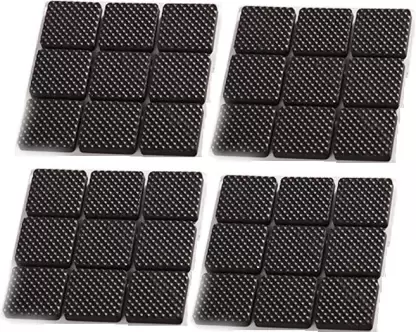
If you’re looking to protect your deck or outdoor space from scratches caused by furniture feet, rubber pads can be an excellent solution. Rubber pads are designed to cushion the feet of your outdoor furniture, preventing damage to both your flooring material and the furniture itself.
One of the main benefits of rubber pads is their versatility. Whether you have chair legs, table legs or even metal furniture, rubber pads can be adjusted to fit a variety of shapes and sizes. They’re also easy to install – typically requiring a simple adhesive backing that sticks securely to the feet of your furniture.
Another advantage of rubber pads is their affordability. Compared to other solutions such as composite decking or outdoor cushions, rubber pads tend to be a more cost-effective option. They’re also easy to replace if they become damaged or worn over time.
When selecting rubber pads for your furniture, it’s important to pay attention to the size and shape of the pad. Choosing a pad that is too small may not provide adequate protection, while a pad that is too large may protrude and create a tripping hazard. Additionally, consider the material of the pad itself – while a hard plastic pad may be suitable for lighter furniture, heavier items may require a softer, more cushioned material like rubber or felt.
While rubber pads can be an excellent solution for protecting your deck or outdoor space, it’s important to remember that they are not foolproof. Regular cleaning of your furniture and outdoor living space is still necessary, as dirt, debris, and weather can still cause wear and tear over time. But with the addition of rubber pads, you can go a long way in preventing scratches and damage to your outdoor patio furniture and decking for years to come.
Plastic Covers for Chair Legs
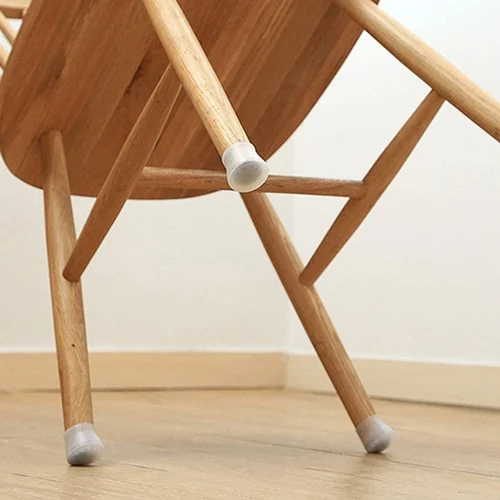
If you’re looking for a solution to prevent your patio furniture from scratching your deck, you may want to consider using plastic covers for your chair legs. These covers are specifically designed to protect your deck from the risk of scratches occurring when furniture is moved or adjusted.
Plastic covers are available in a range of sizes to fit various types of furniture, including chairs, tables, and other outdoor seating options. They come with a simple adhesive backing that allows them to easily attach to the feet of your furniture, providing a slip-resistant fit that can withstand regular use.
One of the key benefits of using plastic covers is their affordability. Compared to other solutions like composite decking or outdoor cushions, plastic covers are a highly cost-effective option that can effectively protect your deck from scratches and other forms of damage.
In addition to their affordability, plastic covers are also incredibly versatile. They’re suitable for use on a range of different decking materials, including pressure-treated wood, natural stone, porcelain tiles, and even wood-like tiles.
Of course, it’s important to choose the right type of plastic cover for your furniture. Some covers may be more suitable for use with lighter furniture, while others may offer greater protection for heavier items. And, like with rubber pads, it’s important to choose the right size to ensure that your furniture is properly protected without creating a tripping hazard.
Ultimately, if you’re looking for a simple, effective, and affordable solution to protect your deck from scratches and other forms of damage, plastic covers for chair legs may be an excellent option to consider. With a variety of sizes and styles to choose from, you’re sure to find the perfect covers that meet your needs and budget.
Soft Cushions for Heavy Chairs and Tables

When it comes to outdoor furniture, heavy chairs and tables can be both a blessing and a curse. On the one hand, they provide a sturdy and durable seating option that can withstand the elements. On the other hand, their weight can be a risk factor for deck scratches and other forms of damage.
The solution? Soft cushions for heavy chairs and tables. By adding a layer of cushioning between your furniture and your deck, you can significantly reduce the risk of damage occurring. Here’s why:
First and foremost, soft cushions provide a protective barrier between your furniture and your deck. When heavy chairs and tables are placed directly onto a wooden deck, their weight can cause scratches and other marks to appear over time. But by adding a cushioned barrier, you can prevent this from happening.
In addition to their protective benefits, soft cushions also provide a comfortable seating option for your outdoor space. They can add a touch of color and texture to your decor, making your deck a more inviting and enjoyable place to spend time.
When shopping for soft cushions, it’s important to choose high-quality materials that are designed to withstand the elements. Look for cushions that are made from durable fabrics like Sunbrella, which are resistant to fading, staining, and mildew. You’ll also want to choose cushions that are designed to fit your specific furniture pieces, ensuring a secure and snug fit.
Overall, soft cushions are a simple and effective way to protect your deck from damage caused by heavy chairs and tables. Not only do they provide a protective barrier, but they also add comfort and style to your outdoor space. So if you’re looking to keep your deck looking its best, consider investing in some high-quality soft cushions for your heavy furniture pieces.

